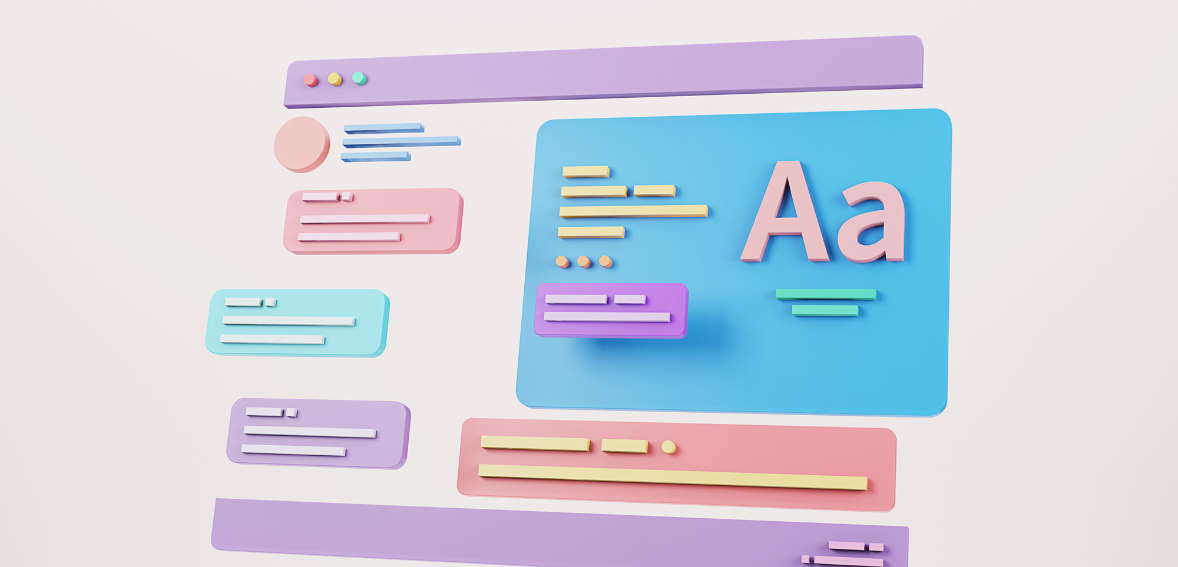In the ever-evolving digital landscape, web design plays a pivotal role in shaping the online user experience. Websites are the face of businesses and individuals on the internet, and achieving consistency in web design is a crucial aspect of making a lasting impression. This article will delve into the significance of consistency in web design and provide valuable insights on how to achieve it effectively.
What is Consistency in Web Design?
Consistency in web design refers to the practice of maintaining uniformity in various elements and aspects of a website. It involves using a cohesive design language across the entire site to create a harmonious and predictable user experience. This consistency can encompass visual elements, such as color schemes and typography, as well as functional aspects, like navigation and user interactions.
The Importance of Consistency in the Digital World
Consistency in web design matters for several reasons. First and foremost, it helps build a sense of trust and reliability with your audience. When users encounter a consistent design throughout your website, they are more likely to feel at ease and find the information they need quickly.
Additionally, a consistent design aids in brand recognition. Your website serves as a digital extension of your brand, and when people consistently experience your brand’s colors, fonts, and overall style, they are more likely to remember and recognize it.
Elements of Consistency
Consistency in web design can be broken down into three key elements:
Visual Consistency
Visual consistency in web design encompasses maintaining a uniform appearance by using consistent color schemes, typography, and imagery across your website. This approach guarantees a cohesive and harmonious look and feel, enhancing the visual appeal and ease of navigation for users. By employing a consistent design language, you create a recognizable and user-friendly online environment, reinforcing your brand identity and making it easier for visitors to navigate your site with a sense of familiarity.
Functional Consistency
Functional consistency in web design centers on ensuring a consistent and predictable user experience. This entails keeping navigation menus, buttons, and interactive elements uniform throughout your website. By doing so, users can easily and intuitively navigate the site, knowing what to expect and how to engage with its content. Functional consistency enhances user satisfaction, reduces confusion, and promotes a smoother and more efficient interaction with your website. It contributes to a positive user experience by making the functionality of your site reliable and user-friendly.
Content Consistency
Content consistency in web design revolves around maintaining a cohesive and uniform tone, style, and messaging across both written and visual content on your website. By upholding this consistency, you reinforce your brand’s identity and make it easily identifiable to your audience. It ensures that your brand’s voice remains constant, whether in text, images, or videos, promoting a sense of reliability and trust. This uniformity helps users to connect with your content, creating a more engaging and memorable experience while strengthening your brand’s message and identity in the eyes of your visitors.
The Impact of Inconsistency
While consistency can greatly benefit your website, inconsistency can have adverse effects.
User Confusion
User confusion in web design results from inconsistent elements on a website, causing difficulties in user navigation. When the design varies from page to page, visitors can become disoriented and frustrated. This inconsistency can lead to a higher likelihood of users leaving the site, which is detrimental for user engagement and the overall success of the website. Consistency in design is crucial to ensure that users have a seamless and enjoyable browsing experience, reducing confusion and frustration while encouraging them to stay and explore the site’s content.
Brand Image
In web design, inconsistency can have a detrimental impact on your brand image. It often conveys a lack of attention to detail and professionalism, which can harm your reputation. When users encounter a website with varying design elements, it can create a sense of disarray and unreliability, leading to doubts about the brand’s credibility. A consistent and well-executed design, on the other hand, enhances your brand’s image, instilling trust and confidence in your audience. A cohesive design signals that your brand is meticulous and reliable, contributing positively to its reputation and online presence.
How to Achieve Consistency in Web Design
Achieving consistency in web design requires a systematic approach. Here are some practical steps to help you achieve it:
Define Your Brand Guidelines
Defining brand guidelines is a crucial step in web design. It involves creating a clear and comprehensive document that outlines the design principles, color schemes, typography, and other visual elements that represent your brand. These guidelines serve as a roadmap for maintaining consistency in your web design. It ensures that everyone involved in web design, from designers to content creators, adheres to the same set of rules and standards. This consistency reinforces your brand’s identity and creates a unified and recognizable online presence, helping to build trust with your audience and convey a professional image across your website.
Maintain a Consistent Color Palette
Maintaining a consistent color palette in web design involves choosing a set of colors that align with your brand’s identity and using them uniformly across your website. This consistency reinforces brand recognition as users associate those colors with your brand. It contributes to an attractive and visually pleasing experience for visitors. By adhering to a specific color scheme, you create a cohesive and harmonious visual environment, making your website more memorable and instantly recognizable. This not only enhances the user experience but also reinforces your brand’s image, promoting a sense of trust and reliability with your audience.
Typography Matters
Typography is a crucial aspect of web design. It involves selecting a specific set of fonts that resonate with your brand’s identity and using them consistently for various text elements like headings, body text, and other content. Consistent typography contributes to brand recognition and creates a visually harmonious and professional website. It enhances readability, user experience, and overall design aesthetics. A well-chosen font communicates your brand’s personality and reinforces its message. By maintaining typographic consistency, you ensure that your website’s text elements convey a uniform and recognizable image, strengthening your brand’s identity and facilitating a seamless user experience.
Consistency Across Devices
Consistency across devices is essential in web design, ensuring that your website adapts seamlessly to various screen sizes, including smartphones, tablets, and desktop computers. Responsive design guarantees that your site looks and functions consistently, providing users with a uniform and user-friendly experience, regardless of the device they use. This approach is critical in an era of diverse digital platforms, as it maintains brand identity and content accessibility. By accommodating different screens effectively, you prevent layout issues and usability problems, enhancing user satisfaction and ensuring that your website delivers a consistent and engaging experience across all devices.
Navigation and User Flow
Effective navigation and user flow are essential in web design. Maintaining a clear and consistent navigation structure helps users easily navigate your website. It ensures that menus, links, and buttons are logically placed, making content readily accessible. The user flow should be intuitive, guiding visitors through the site in a logical sequence, reducing confusion, and enhancing their experience. Prioritizing a user-friendly navigation system and intuitive flow contributes to higher user satisfaction, longer engagement, and a better overall user experience, ultimately increasing the chances of achieving your website’s goals, whether that’s providing information, making sales, or delivering content.
The Role of UI/UX
User-Centric Design
User-centric design, encompassing both user interface (UI) and user experience (UX), is fundamental to achieving web design consistency. It places the user’s needs and preferences at the forefront of the design process. Prioritizing a user-centered approach means focusing on creating a seamless and enjoyable experience for website visitors. UI design ensures that the visual elements and layout are intuitive and easy to navigate, while UX design concentrates on overall user satisfaction, from the moment users land on your site to when they achieve their goals. A user-centric design approach enhances user engagement, fosters loyalty, and contributes to a consistent and positive user experience.
Testing and Feedback
Regular testing and feedback collection are integral parts of web design to ensure consistency and user satisfaction. By regularly testing your website, you can identify areas where design elements may lack consistency or cause usability issues. Gathering feedback from users provides valuable insights into their experiences and preferences. This feedback loop helps pinpoint areas for improvement and refine the design, ultimately maintaining a consistent and user-friendly experience. Consistent refinement and fine-tuning of your website based on testing and user feedback are key to achieving and sustaining web design consistency, ensuring that your site continues to meet users’ expectations and needs.
Case Studies
Let’s explore some real-world examples to understand the impact of consistency in web design.
Successful Examples of Consistency
Websites like Apple and Google exemplify the impact of consistency in web design. These industry giants showcase clean and recognizable interfaces that align with their brand identity. They employ unified color schemes and maintain a cohesive visual language, promoting user familiarity and trust. Additionally, their intuitive navigation structures ensure an enjoyable and efficient browsing experience. These examples emphasize that consistency in web design not only reinforces brand recognition but also plays a pivotal role in enhancing user engagement and overall user satisfaction. By adhering to a consistent design language, these websites establish a strong online presence that resonates with users.
Consequences of Inconsistency
Inconsistent web design, as seen in outdated e-commerce websites with mismatched colors and fonts, can have detrimental consequences. Users often find such websites challenging to navigate, leading to lower engagement. The lack of visual harmony and a unified design language can instill doubt in users, affecting their trust in the site and its offerings. Consequently, these inconsistencies can lead to lower conversion rates, as users may be hesitant to make purchases or take desired actions. Inconsistent design not only hinders user engagement but also undermines the credibility and effectiveness of the website, making it crucial to prioritize design consistency for online success.
SEO Benefits of Consistency
Consistency in web design also offers SEO benefits:
Improved User Engagement
Enhanced user engagement is a direct result of user-friendly web design. When visitors find a website that is easy to navigate and visually appealing, they are more inclined to spend more time exploring its content and actively engage with it. An intuitive and attractive design invites users to delve deeper into the site, click on links, view multiple pages, and interact with various elements. This increased user engagement can lead to higher levels of interaction, a greater likelihood of achieving the website’s goals (such as conversions or content consumption), and a more positive overall user experience, ultimately benefiting the website’s performance and effectiveness.
Lower Bounce Rates
Consistency in web design significantly reduces bounce rates, which measure the percentage of visitors who leave a website without engaging further. A consistent and well-structured design enhances user experience, making it easier for visitors to find what they’re looking for and navigate the site. When users encounter a unified and predictable design across pages, they are less likely to leave quickly out of frustration or confusion. Lower bounce rates indicate that users are staying on the site, exploring content, and engaging with its offerings. This not only improves the effectiveness of the website but also signals to search engines that the site provides valuable content and a positive user experience, potentially benefiting its search engine ranking.
Enhanced Credibility
A well-designed and consistent website contributes to enhanced online credibility and trustworthiness. When users encounter a site with a cohesive and professional appearance, it fosters a sense of reliability and competence. This, in turn, positively influences their perception of the brand or content offered on the site. Increased credibility can lead to higher levels of trust among visitors, which can impact search engine ranking. Search engines aim to deliver quality and reliable content to users, so websites perceived as credible and trustworthy may receive preferential treatment in search results. Therefore, a consistent and polished design not only benefits the user experience but can also have a positive impact on a website’s visibility and search engine ranking.
Conclusion
Consistency in web design is not just about aesthetics; it’s about creating a seamless and user-friendly digital environment. By focusing on visual, functional, and content consistency, following brand guidelines, and considering the role of UI/UX, you can significantly enhance the user experience and positively impact your brand’s image. In the ever-changing online world, maintaining consistency is key to staying relevant and trustworthy.
FAQs
What is the importance of color consistency in web design?
Color consistency is crucial in web design as it creates a cohesive and visually appealing experience for users. It helps in brand recognition, user engagement, and conveying a professional image.
How can I maintain content consistency on my website?
To maintain content consistency, establish clear brand guidelines for tone and style, and ensure that all content creators follow them consistently. This includes using a uniform voice, messaging, and visual elements.
Does consistency in web design affect mobile responsiveness?
Yes, consistency in web design is vital for mobile responsiveness. A consistent design ensures that your website functions seamlessly on various devices, providing a better user experience.
Can inconsistency harm my website’s search engine ranking?
Inconsistency can negatively impact your website’s search engine ranking by leading to higher bounce rates and a poor user experience, which search engines take into account when ranking websites.
Are there tools available to help maintain web design consistency?
Yes, there are various tools and design systems available to help maintain web design consistency, such as design software, style guides, and user testing tools. Using these resources can streamline the process and ensure a cohesive design.





